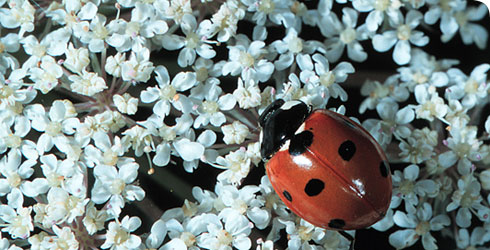British natural history
If you are a city-dweller, you might be forgiven for thinking Britain is sparse in wildlife. But you’d be mistaken – Britain is teeming with wildlife, and in fact, many species flourish in an urban setting. Did you know peregrine falcons can be found in London and that Britain is home to 50 per cent of the world’s bluebells? Explore our content and discover the wildlife on your doorstep.
-

UK Biodiversity Portal
Find out about UK biodiversity and how you can help to preserve it by identifying local species, taking part in wildlife surveys, and much more.
-

Nature Groups Near You
Find wildlife and natural history societies, events and activities to match your interests. Search our UK directory to discover what’s happening near you.
-

British habitats
The British Isles have a wide range of habitats, from low-lying fens to open heathlands and hundreds of miles of hedgerow. Find out about their history and the threats they face.
-

Urban tree survey
Identify a tree today. Help us learn what species are growing where in the UK by telling us about the trees in your streets, parks and especially in your gardens.
-

Leafsnap UK app
Identify UK trees with our app for iPhone, Leafsnap. It includes information on 156 UK tree species along with high-resolution images.
-

Big Seaweed Search
Take a walk along the coast and help us monitor the effects of climate change and invasive species on the UK's seaweeds.
-

Exploring British wildlife: bluebells
Are bluebells flowering earlier than they used to? Help us find out by taking part in the Museum's bluebell survey. Discover what past surveys have revealed about the spread of non-native bluebells.
-

Coastal wildlife walk video
Join Museum botanist Fred Rumsey as he takes a walk along the south coast of Britain and introduces you to a host of plants surviving in extreme conditions.
-
Urban wildlife: captured on camera
The first film in our series about wildlife living alongside us in towns and cities reveals fungi hiding in the heart of London.
-

Earth lab datasite
Find out about fossils, minerals and rocks discovered in your local area with the Earth Lab database.
-

Bug forum
Ask questions and share identification tips about all types of British bugs, from bees to beetles and wasps to woodlice. Museum insect-experts are on hand to answer your questions.
-
Bug gallery - identify your bug
-
Naturecam
Visit our Centre for UK Biodiversity in the Darwin Centre

Found a new plant in your garden, an odd creature in your house, or a strange fossil on the beach? Bring it in to us and one of our Identification and Advisory staff will help identify it.
Centre for UK BiodiversityVisit the online ID forum

